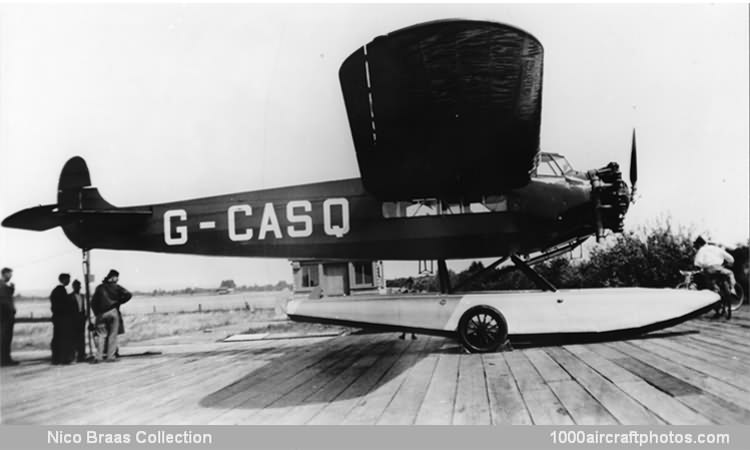12/31/2010. Remarks by Johan Visschedijk: "Appearing in 1927, this was a development of the Universal with a more powerful 410 hp Pratt & Whitney Wasp engine and a modified landing gear. It was used as both land- and floatplane and carried six passengers and one or two pilots. As a floatplane the top speed was reduced to 128 mph (206 kmh). The construction of the Super Universal was exactly as its predecessor but it was somewhat larger and the spidery landing gear of the Universal was replaced by single and more streamlined struts, incorporating shock absorbers.
In addition to its widespread use by civil operators the Super Universal was used by the USN on transport and cargo duties. In all eighty were produced by the Fokker Aircraft Corporation of America at Teterboro Airport, New Jersey. The Nakajima Aircraft Company of Japan built at least 46 of the type under license, most of these were for Japan Air Transport Company Ltd., in 1929, but some were flown by Manchurian Airlines and the Japanese AAF. A further fifteen were produced by Canadian Vickers in Canada.
The G-CASQ was built in 1929 and registered to Western Canada Airways on January 16, it was operated on wheels, floats, and skis. On September 23, 1929, the aircraft was put to the disposal of the search party for the missing Dominion Explorers Expedition. It was damaged when it fell through the ice near the Bathurst Inlet, Northern Territory on October 28, under harsh conditions it was repaired within five days. Nine years later, November 17, 1938, and by that time in private hands, the aircraft was damaged beyond repair in a forced landing near Disappointment Inlet, British Colombia."
